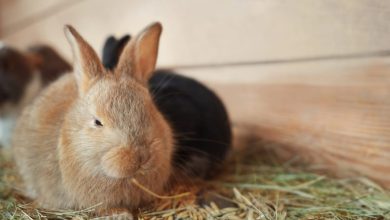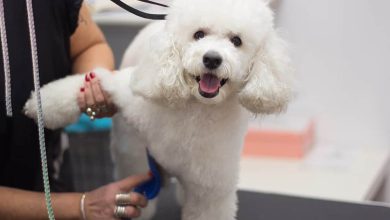Bourke’s Parrot – A Pink Parakeet’s Species Guide Explained

It might not be the first species that comes to mind when thinking about adopting a parakeet but the Bourke’s parakeet is definitely one you should consider.
Although…
Some people find them more subdued than other birds, the Bourke’s parakeet is a great option if you want a tranquil bird.
As well as being mellow, they are lovable and loving pets so let’s take a look at this species.
Bourke’s Parakeet Species Overview
Often referred to as the pink parakeet, the Bourke’s parakeet, or Neopsephotus bourkii to give it its scientific name, is native to Australia. They were first discovered in New South Wales in the 1830’s and can still be found across several dry and arid regions of Australia.
There are still relatively high numbers of this species in the wild so they are not endangered and breeding as pets has helped to keep the species going. Similar small parakeets include the budgerigar or common budgie and the lineolate.
Characteristics Of Bourke’s Parakeets
Physical
The Bourke’s parakeet measures between 7-8 inches when fully grown and weighs around 45 grams which places them firmly in the small bird category. The wingspan of most parakeets is around 12 inches so these smaller birds will have plenty of energy and need to stretch those wings regularly.
Known as the pink parakeet, these birds have more subtle colorings than other species. The rosy Bourke’s parakeet is a popular color variation because of their beautiful bright pink feathers. There are also cream, blue, pied and cinnamon color variations and they generally have a dusty brown and light pink plumage with blue tail feathers.
Behavior
The Bourke’s parakeet’s behavior matches its subtle appearance. They are intelligent and relatively quiet but do have plenty of energy for flying around. They’ll appreciate plenty of time out of their cage or preferably more spacious living quarters like an aviary. The Bourke’s parakeet makes a great pet because it is very friendly and bonds quickly with owners, especially if you hand feed them from a young age.
Being quite relaxed birds, the Bourke’s parakeet isn’t too loud and only really makes noise at sunrise and sunset so they are suitable for homes with close neighbours. They also don’t talk or perform tricks like some other parakeets so if you are looking for a chatty bird, this isn’t the right option for you. They also have quite a long lifespan for a small bird and have been known to live up to 30 years.
Raising A Bourke’s Parakeet As A Pet

Temperament
Bourke’s parakeets make lovely pets because they are so loving towards their owners. They are calm and love to cuddle so they are perfect for anyone looking for a quiet pet bird. They are flock creatures so are better off living with several other birds and don’t do well alone in a small cage.
However, they can live with one other bird that they are paired with happily. Being quite docile, they aren’t known for nipping which makes them great for families with children.
Despite their polite and submissive nature, they still need plenty of exercise and entertainment and thrive in a large cage or aviary where they can fly around. They will need 2-3 hours out of the cage a day and plenty of toys to keep them occupied, particularly branches and swings that they can fly between to burn that energy.
Training
As far as training goes, Bourke’s parakeets aren’t really the type of parakeet to perform lots of tricks. They don’t talk like parrots but you can train them to be affectionate quite easily as it’s part of their nature. Once they’ve settled into their home, hand feed them regularly to encourage affection and bonding. You can then encourage them to sit on your shoulder or fly into your hand for food.
Home Type
Although their quiet and calm nature might make you think they are suited to smaller apartments and homes with close neighbours, Bourke’s parakeets are much more accustomed to large areas where they can fly around and enjoy a bit of freedom. If you have a lot of land or an aviary this would be ideal, otherwise you should think about making some space for a larger cage that they can fly around in.
Experience Level Required
These birds don’t require lots of training and are friendly and docile in most home situations so they are suitable for first time owners. If you have other birds already, you’ll want to be careful about putting these birds together as the Bourke’s parakeet can be intimidated by larger birds.
How To Care For A Bourke’s Parakeet

Cage Size And Set Up
As Bourke’s parakeets love to fly, they are much more suited to an aviary than a cage. An aviary needs to be around 6 feet in length and width and have plenty of trees and branches for the birds to fly between so you will need some outdoor space. They are acclimated to colder weather so don’t worry about leaving them outside in the aviary over winter, just make sure you provide some nesting boxes for shelter.
Of course, a lot of people looking for a pet bird don’t have the space for an aviary so the next best option is to get the biggest cage possible and use lots of swings and perches to encourage them to fly around. As Bourke’s parakeets are smaller parakeets, you can choose a cage with bar spacing of no more than ½ inch but the dimensions should be suitable for a larger parakeet, around 24 inches in width by 24 inches in depth by 36 inches in height.
Diet
In their natural habitat, Bourke’s parakeets forage for food in fields and open grasslands so their diet is made up of seeds, plants and the occasional fruit, berry and insect. You can feed your Bourke’s parakeet a parakeet seed mix which will contain most of the supplements they need from day to day. Make sure you compliment this bird seed mix with bird safe fruits and vegetables like carrots, broccoli, strawberries and apples.
They will need their bird feed bowl filled two or more times a day to keep up with their energy expenditure and you should clean both food and water bowls daily.
Breeding
These pink parakeets tend to mate for life so if you have a pair that get on, you can expect successful breeding. They prefer to nest in trees which is another reason why keeping them in an aviary is a good idea. They breed year-round and usually lay between 3 and six eggs which take 18-21 days to hatch. Breeding Bourke’s parakeets in captivity is common and helps to keep their numbers high.
Exercise
Like most small parakeets the Bourke’s parakeet needs a few hours outside of the cage a day to use up their energy. If you do keep them in a large cage or aviary, they’ll be able to use up some of this energy flying around their cage but they’ll always appreciate open spaces to fly around. As well as perches and swings, they’ll enjoy some homemade toys they can chew on and some natural foliage in their cage that they can peck at.
Price
Parakeets are one of the more cost-effective birds and as these rosy Bourke’s parakeets aren’t as popular as more colourful birds, you can get them for a reasonable price which is a good reason to buy more than one so they can live together. Generally, parakeets cost between 20 and 800 USD depending on the breeder.
Health
One common health problem with parakeets is psittacosis, a bacterial infection that can be passed between birds and causes respiratory problems. If you notice your birds are having trouble breathing, take them to a vet who can prescribe antibiotics. Other signs of illness include loss of appetite and crusty beak or toes. You should also keep their claws trimmed to avoid discomfort.
Similar Species
There are several closely related parakeets which are similar to the Bourke’s parakeet. Here are just a few popular options:
- Indian Ringneck
- Budgies
- Quaker
Should I Adopt A Bourke’s Parakeet?
If you haven’t got a lot of indoor or outdoor space then you might not be able to provide the happiest home for these free flying birds.
On the other hand, if you have a garden and an aviary and are interested in a docile, relaxing bird to give a bit of life to your garden, a Bourke’s parakeet is a great choice.
They are friendly, loving, great for first time bird owners and their unique rosy pink colourings perfectly match their calming personalities.



